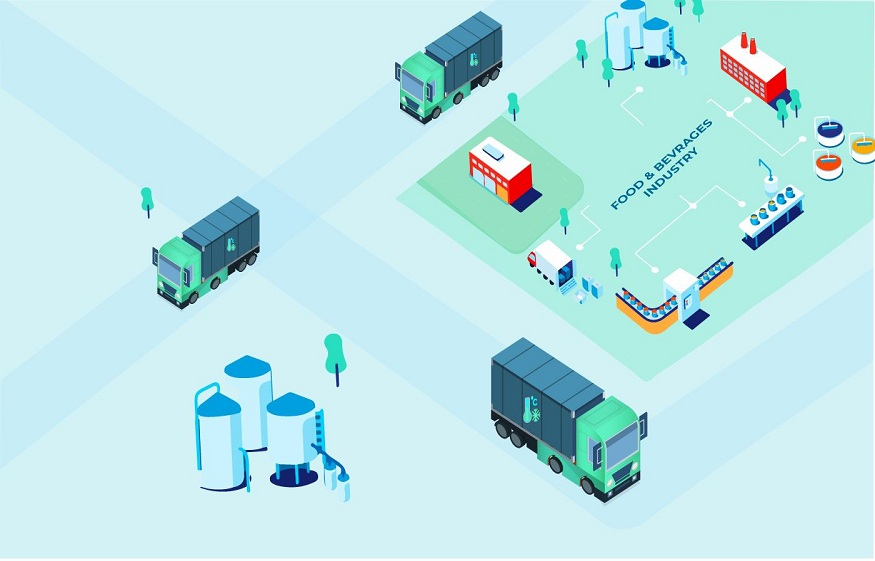A big YES, Food and beverage companies can utilize demand sensing to estimate sudden fluctuations in market trends and stock the inventory at optimal levels to meet supply needs.
Demand fluctuations play an upper hand in the food and beverage industry, and how companies approach demand forecasting can significantly impact their long-term and short-term success. The food and beverage industry is known for its rare challenges involving volatile commodity pricing, fluctuating consumer demand, and raw material perishability. A dynamic demand planning software can be effective for businesses to meet consumer demand at the right time.
Challenges Faced by the Food and Beverage Industry
The food and beverage industry has gone through a lot of transformation in the past decade due to changing consumer behaviour and advancements in technology. Being a consumer-driven industry, the businesses have to mould themselves to satisfy consumer perspectives who are more focused on maintaining a healthy lifestyle and want fresh products.
F&B companies supply perishable goods, which have a short shelf life and expire in a specific time. Thus, it is essential to understand how much should be ordered at once. If a company produces or purchases too many goods, there is a risk of overstocking, and these goods might reach the expiry date before they are sold. The business incurs losses in terms of money, time, and resources while aiming to sell perishable products which do not match consumer demand.
On the other hand, their lies the situation of stockouts. A food and beverage company that fails to meet the consumer demand for food and beverages at the right time loses opportunities for growth and sales. Furthermore, the brand reputation might suffer, and customers might shift to their competitors resulting in a loss of revenue.
Food and beverage companies require a precise mode of estimating real-world demand accurately and meeting customer expectations. Thus for estimating demand accurately, a demand sensingtool is necessary.
What is Demand Sensing?
Consumer demands change rapidly with time and companies need to predict demand while considering short-term trends immediately. Instead of working with the same forecast for a month, you can make improvements to your forecast by analyzing the latest sales information and make improvements for enhancing profits.
Demand sensing is predicting the demand for a short-term by considering the buying patterns. Factors such as attributes that boost sales, who is buying what, and what affects demand-forecasting items. It utilizes Artificial Intelligence and real-time data for providing granular-level forecasts. It leverages advanced analytics and machine learning for identifying complicated trends and offering insights into a demand that may otherwise go unnoticed.
Need for Demand Sensing for F&B Companies
Demand sensing assists companies in different aspects, such as manufacturing, procuring goods, scheduling and customer service. Short-term demand forecast allows the F&B industry to make informed decisions which are essential for being able to manufacture and distribute goods with a high customer service level without overstocking or risking obsolescence.
Demand signals may arise from external and internal sources such as Point of Sale, competitive data, syndicated data sources like seasonality or weather forecasts, and demand signal repositories for determining demand patterns. Compared to the traditional time-series forecasting method, demand sensing can enhance short-term forecasting accuracy by 40% or more.
Utilizing near-term data for estimating short-term demand allows F&B companies to optimize many aspects of the supply chain. It ensures that appropriate quantities of stock are available at the proper location at the right time or assigning the current stock to satisfy local demand. It also helps predict expiry on inventory in transit and the warehouse and examine and utilize production ability for quickly countering demand fluctuations.
Demand sensing involves the following steps:
- Importing short-term historical sales information daily instead of doing it monthly or weekly.
- Layering in various past promotion & events data which were run by the marketing and sales teams to estimate promotional uplift chart
- The demand planner can incorporate the ground level intelligence which the system doesn’t have visibility into and adjusted/modified demand planning figures
- Immediately sense demand signal shifts as compared to a comprehensive statistical demand trend.
- Inspect partial period actual demand and implement short-term forecast modifications by utilizing automated routines.
- Automate the purchase and replenishment planning to eliminate out-of-stock losses
Benefits for the F&B Industry?
F&B companies can generate accurate demand-sensing reports using automated demand planning software. All the processes in the supply chain can be automated with cutting-edge algorithms, deep analytics, and machine learning. Decision-makers in the F&B industry can react quickly in the areas concerning:
1. Forecasting-
Software-driven systems can examine multiple data points as possible in the manual approach. By utilizing real-time data, planners can have access to the latest information and have an analysis in front of their eyes in the contextualized format. It enables exact forecasts with valuable insights needed to react quickly at every level.
2. Improved Logistics–
As restaurants ceased to order supplies during the pandemic, products piled up and started to decay in the warehouse. With efficient demand planning software, the supply chain has overall transparency and visibility, and the siloes can be removed. By utilizing the analytical power of the software, companies can learn to avoid such disasters. Utilizing data, businesses can potentially reroute food from one industry segment to another or directly to consumers.
3. Better Processes–
Packaging is one of the issues faced by businesses. When businesses sell directly to consumers, many goods may get packed in an impractical way for usage by individuals. By enabling a flexible response to purchasing, visibility, forecasting, and transportation, the software can liberate the brainpower needed by leadership to develop new processes for learning from this episode and produce competitive demand planning strategies for addressing issues like packaging formats.
Fountain9 is a Y Combinator-backed company that provides efficient demand planning software which generates accurate forecasts by considering nine unique factors that influence demand. These factors include holidays, markdown events, pricing changes, seasonality, historical sales trends, and more for fulfilling inventory requirements at the proper time. It aids the food and beverage industry in optimally stocking items, thereby avoiding overstocking and understocking practices. This helps businesses to prevent unnecessary losses due to missed sales and avoid expenses of overstocking. Furthermore, demand can be adequately met, leading to happy customers.
@[email protected] can you refine the steps? I have added the points you mentioned
_Assigned to Upasana Jani_



